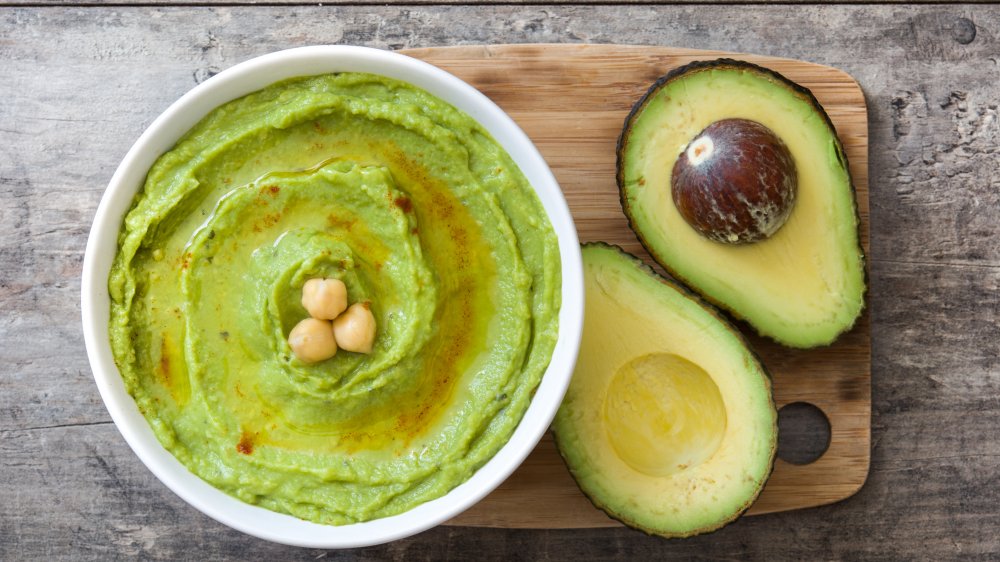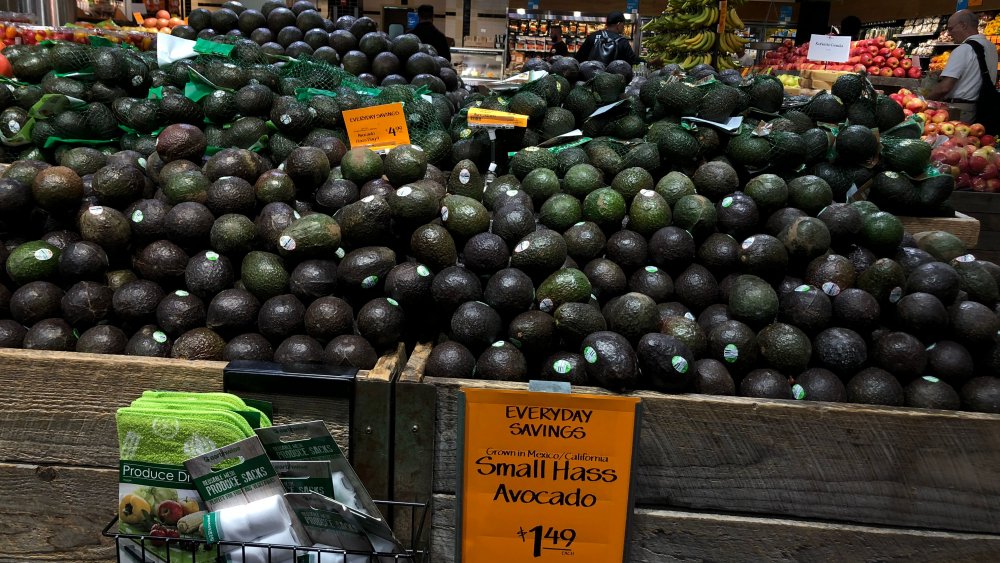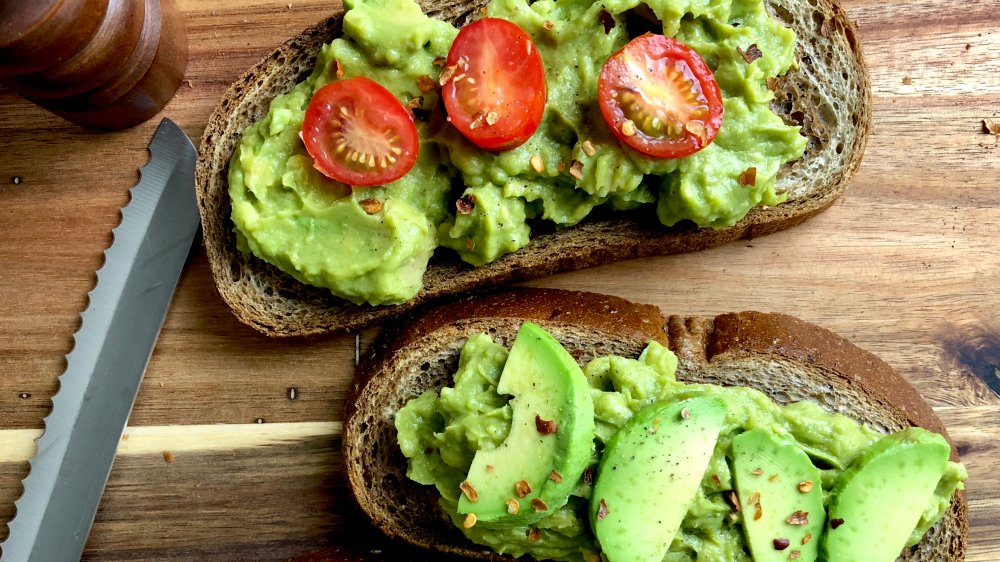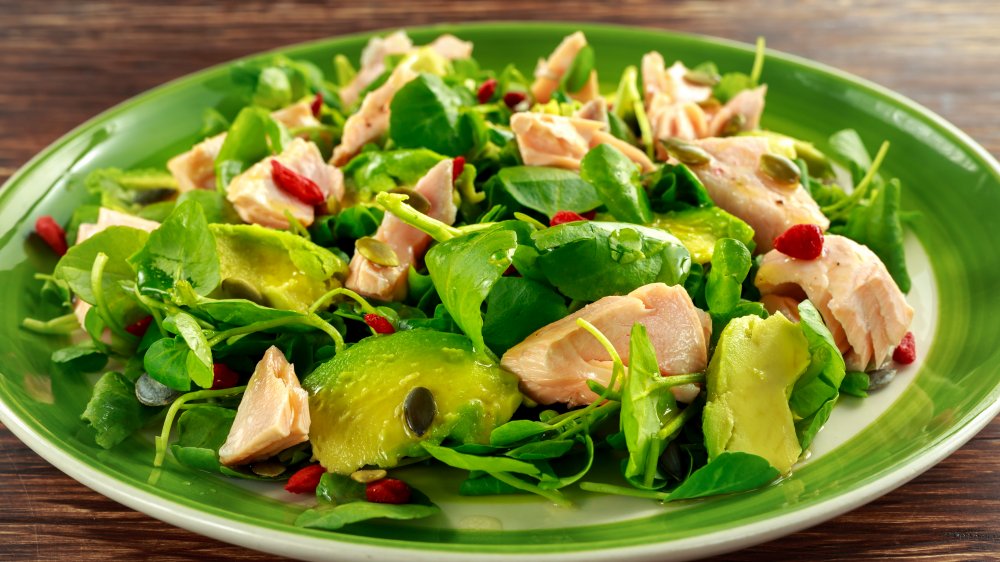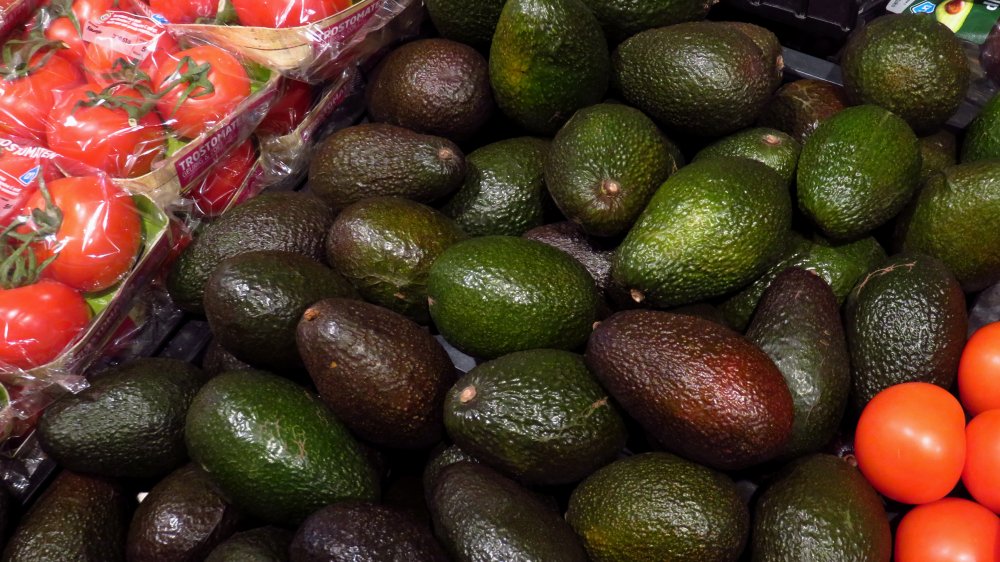Why Are Avocados So Expensive?
Depending on where you are in the world, you can find avocados in both savory dishes as a side or garnish, or as the main ingredient in puddings and dessert. The New York Times even has a blog post with a laundry list of the avocado's good points: it's rich in fiber, has plenty of monounsaturated (healthy!) fats, and is full of bitamins B (folate), C, E, and K (which helps maintain bone health), in addition to potassium and lutein (which keeps eyes healthy).
At 250 calories per fruit, the avocado may be a bit on the calorie-dense side, but otherwise, it would be understandable that a growing number of fans consider the avocado a gift from the fruit gods.
Avocados have been around for thousands of years
Avocados have been around for a while, since 750 BC to be exact, when Business Insider says archaeologists in Peru found avocado pits buried with Incan mummies. The fruit was mostly farmed in Central and South America for several hundred years, and remained undiscovered by the west until the late 19th century. By this time, the fruit which Aztecs called āhuacatl (which translates into "testicle") was renamed aguacate by Spanish conquerors.
The fruit was known by other names in other parts of the region. It was called the "alligator pear" in a 17th-century catalog of Jamaican plants — which is the name California farmers decided to use when they grew the fruit commercially. But the name was not seen as being commercially viable; it was then that the farm's lobby group opted to use an American version of "āhuacatl" for the fruit, and the alligator pear became known as the avocado (via The Spruce Eats).
Avocados didn't become popular until the late 20th century
While the avocado (which The Spruce Eats says is actually a mono-seeded berry) was popular in California, Florida, and Hawaii, it didn't actually start becoming more popular until the 1990s, when the U.S. relaxed import rules against Mexican-grown versions of the fruit.
Harold Edwards, President of California avocado producer Limoneira (via Bloomberg) says, "What actually had transpired and took place was, as that Mexican supply became much more prevalent and available, retailers got behind marketing and selling avocados, food service providers, restaurants started putting it as permanent parts of their menus, and demand started to boom because the inconsistent supply chains before were now consistent, and consumers were allowed to enjoy avocados every day of the year."
There are several varieties of avocado
There are several types of avocados on the market today — but the most popular version is the Hass. Hass avocados are popular additions to a salad, with eggs as part of a gourmet breakfast, in a smoothie, and as the main ingredient in guacamole. The scale at which avocados like the Hass is consumed used to peak on Super Bowl Sunday, when Business Insider says nearly 200 million pounds of the fruit were eaten.
Today, the global appetite for the avocado is year-round. David Magana of agricultural bank Rabobank says (via USA Today), "... expanding global demands, including U.S. demand [for avocados], it just continues to grow. Avocados are not only consumed now for Super Bowl or during Cinco de Mayo celebrations but [are for] year-round consumption."
But the avocado's growing popularity, along with water shortages in avocado-growing regions, is putting stress on producers who are struggling to keep up with demand. Mother Jones considers avocados to be the thirstiest fruits in the produce section, because in order to grow a pound of the fruit in California, where Business Insider says a seven-year drought has just ended, you need more than 74 gallons of water. And that's not all.
Avocados are difficult to grow
Gus Gunderson, Director of Farming of Limoneira, says, "There are multiple inputs that avocados require, whether it's water, fertilizer, pruning, pest control, the sunburn protection of trees. All those go into making your chances better of having a very good-quality crop. When we decide to plant an avocado orchard, we'll plant trees that come from certified nurseries. We have to place our orders years in advance. On average, if we're producing 100,000 pounds per acre, that takes about a million gallons of water, so 100 gallons per pound, so it'd be about 50 gallons per 8-ounce fruit. But that's dependent on what mother nature will throw at you, you know, we have wind, we have intense sun. It's really hard for a grower to manage the unmanageable things that will affect a crop."
If you consider all these factors, plus the fact that avocados need to be shipped to different corners of the world with haste because they don't keep for longer than seven to 10 days after they are picked, and they need to get from farm to table quickly as a result, it's no wonder that avocado fans are paying a premium for their favorite fruit. With demand rising for good avocados, that price isn't expected to drop too dramatically anytime soon.
